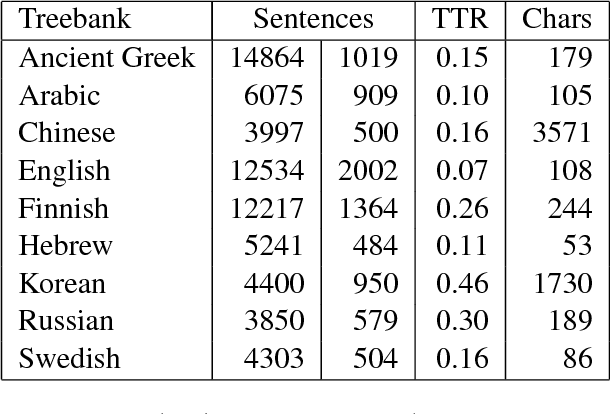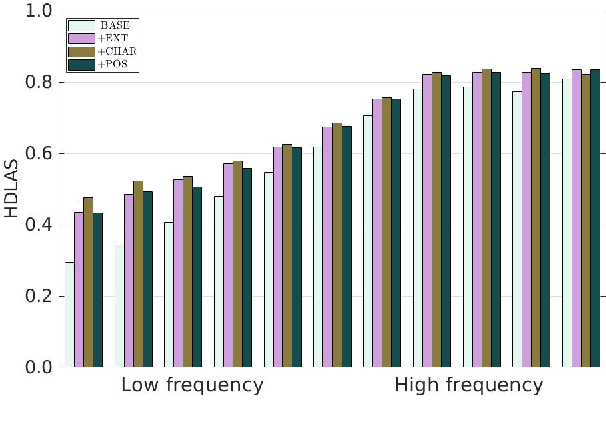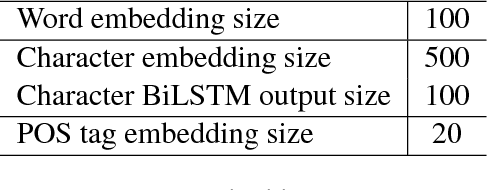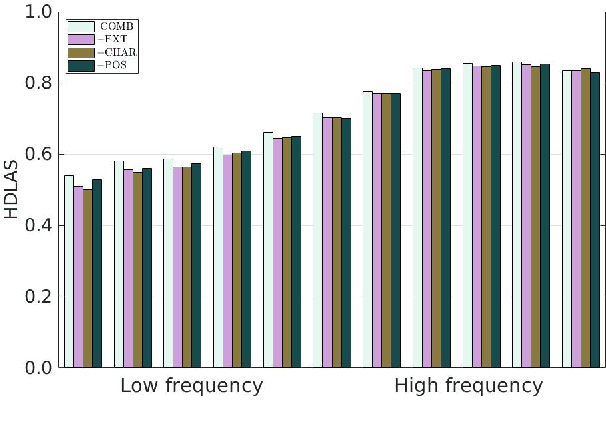An Investigation of the Interactions Between Pre-Trained Word Embeddings, Character Models and POS Tags in Dependency Parsing
Paper and Code
Aug 27, 2018



We provide a comprehensive analysis of the interactions between pre-trained word embeddings, character models and POS tags in a transition-based dependency parser. While previous studies have shown POS information to be less important in the presence of character models, we show that in fact there are complex interactions between all three techniques. In isolation each produces large improvements over a baseline system using randomly initialised word embeddings only, but combining them quickly leads to diminishing returns. We categorise words by frequency, POS tag and language in order to systematically investigate how each of the techniques affects parsing quality. For many word categories, applying any two of the three techniques is almost as good as the full combined system. Character models tend to be more important for low-frequency open-class words, especially in morphologically rich languages, while POS tags can help disambiguate high-frequency function words. We also show that large character embedding sizes help even for languages with small character sets, especially in morphologically rich languages.
 Add to Chrome
Add to Chrome Add to Firefox
Add to Firefox Add to Edge
Add to Edge